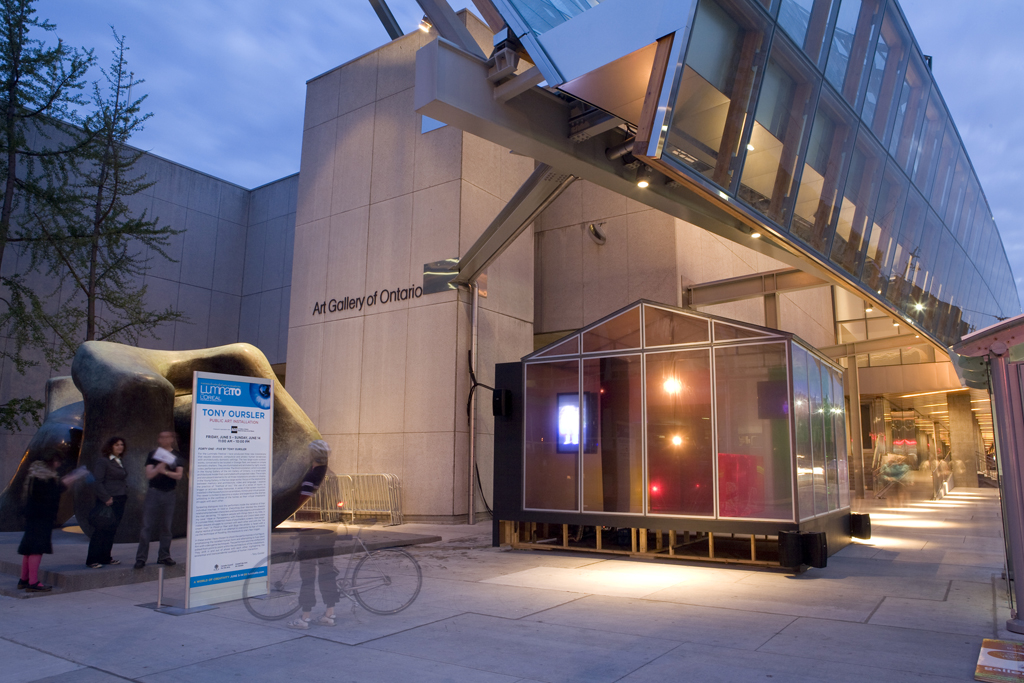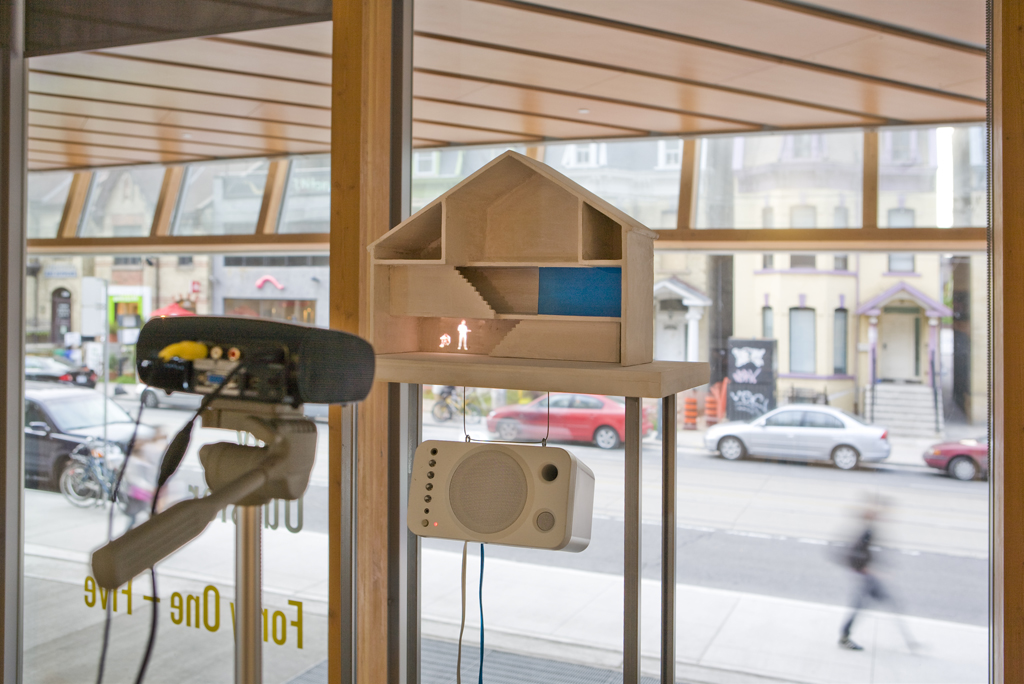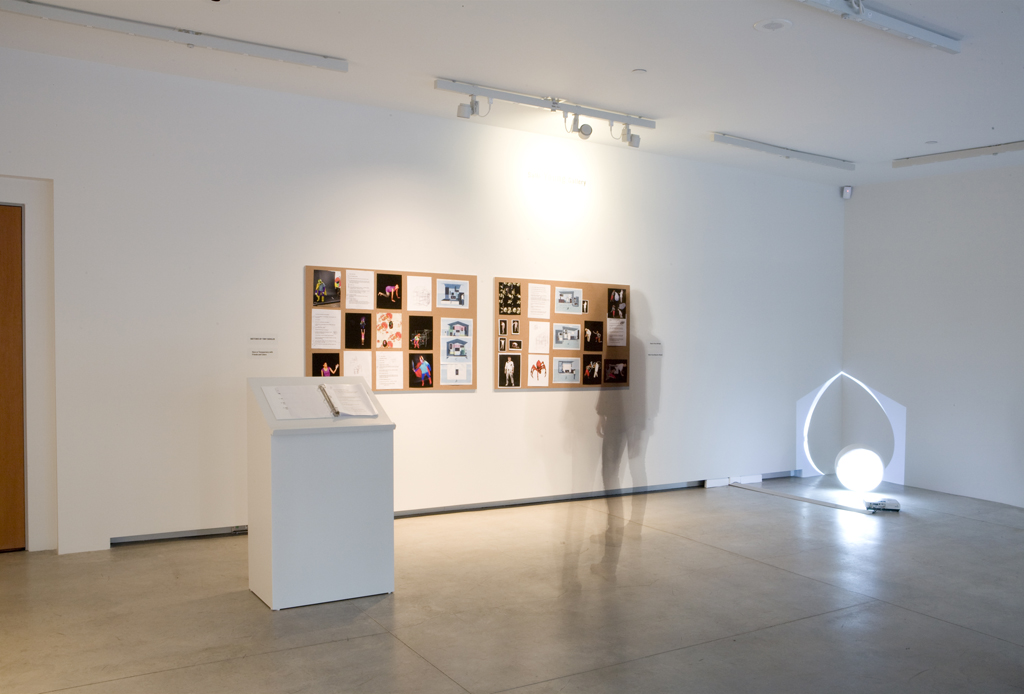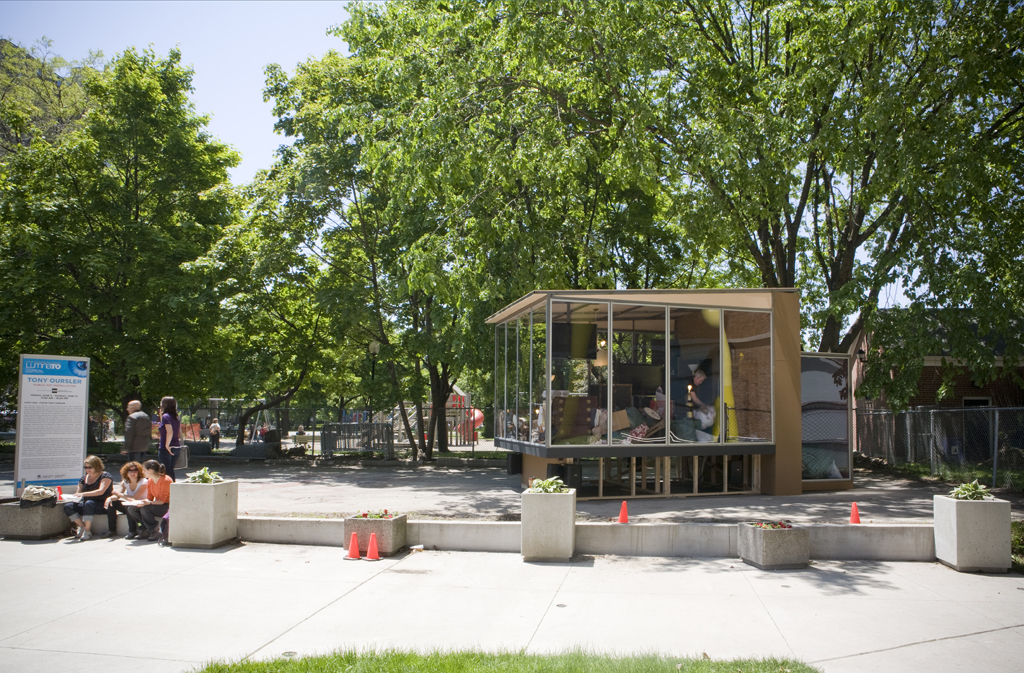Void or Everything Ever Wanted
Luminato, Grange Park, Tortonto, Canada
Jun. 5 - Jun. 26, 2009





Located in and around the Art Gallery of Ontario (AGO), Oursler's installation is separated into three parts and structures; two Plexiglas houses equipped with flat-screen monitors, and a sculpture inside the Young Gallery of the AGO.
In 2009, Oursler embarked on three video theatricals acted out in miniature. Three architectural models displayed as cutaways act as stages for projected characters. Each theatrical is a loose half-hour of dialogue between two protagonists. Live-action footage moves preternaturally from room to room, floating, flying, and shifting in scale and speed with the assistance of computer manipulations. Digital alterations enable the characters to act out interiorized themes, and evoke the purgatorial mise-en-scene of the text. Oursler has generally shied away from linear narrative but here the longer form seemed to offer a different way of entering the material and drawing out the interconnected themes of phobia, tortured love and addiction.
In Flood or Fear of Bugs, performer Erik Aalto-doubled through the magic of computer animation- argues with himself about his inability to face his phobias. The title refers to the flooding synapses when adrenaline is released, triggering the "fight or flight" response that is at the core of all phobias. Set in a classic split-level tract home, the protagonist moves from room to room as he battles myriad fears-including computer-animated bugs (of ambiguous reality) which eventually invade the home. The house mirrors Maslow's pyramid chart of human needs in which the character attempts to ascend to a position of self-actualization, yet finds himself hiding in the eaves.
In Vacuum, Tony Conrad and Constance DeJong clash in an gender-defining battle between male and female constructs. The title refers to the nature of the void, which is endlessly disputed in the dialogue, vacillating between the life-giving womb and a stifling cave, located below the basement of their model home. We find the characters in the midst of an intervention: the woman is attempting to address the man's compulsive hoarding habits, which have filled every room in the house. She then chides the man for his inability to give birth, a possible dialectic equating the two genders with political systems, specifically communism and capitalism.
In Fog or Friends Helping Friends Save the World with Mirror, performers Tony Oursler and Candice Fortin inhabit a dysfunctional and delusional world within the boundaries of the architectural model. They live in myopic bubbles of narcissism, which they share with a mysterious talking mirror that occasionally offers God-like advice in computer tones. After being dosed with a mind-expanding drug, the woman physically expands to the size of the house, convinced she is becoming one with the universe, yet paradoxically remaining in complete isolation. A few rays of hope punctuate the scene as they roam from room to room searching for lost objects and broken dreams, all during an endless wait for the "ice cream man". The model is set within a dioramic landscape, complete with tree and glowing sunset. Only visible through a haphazard hole in the gallery wall, the theatrical was held at a remove from the audience.